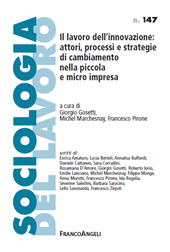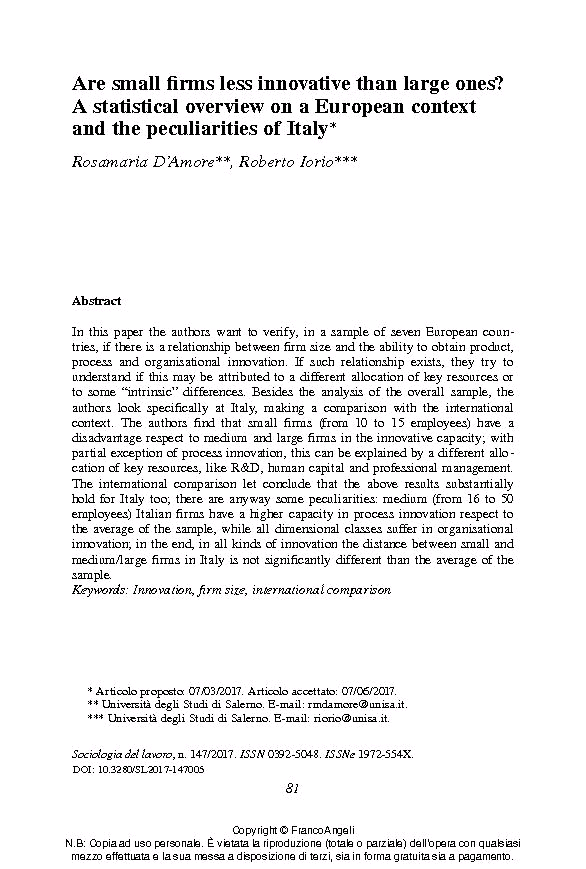Are small firms less innovative than large ones? : a statistical overview on a European context and the peculiarities of Italy
81-107 p.
In this paper the authors want to verify, in a sample of seven European countries, if there is a relationship between firm size and the ability to obtain product, process and organisational innovation. If such relationship exists, they try to understand if this may be attributed to a different allocation of key resources or to some "intrinsic" differences. Besides the analysis of the overall sample, the authors look specifically at Italy, making a comparison with the international context. The authors find that small firms (from 10 to 15 employees) have a disadvantage respect to medium and large firms in the innovative capacity; with partial exception of process innovation, this can be explained by a different allocation of key resources, like R&D, human capital and professional management.
The international comparison let conclude that the above results substantially hold for Italy too; there are anyway some peculiarities: medium (from 16 to 50 employees) Italian firms have a higher capacity in process innovation respect to the average of the sample, while all dimensional classes suffer in organisational innovation; in the end, in all kinds of innovation the distance between small and medium/large firms in Italy is not significantly different than the average of the sample. [Publisher's Text].
Fa parte di
Sociologia del lavoro : 147, 3, 2017-
Articoli dello stesso fascicolo (disponibili singolarmente)
-
Informazioni
Codice DOI: 10.3280/SL2017-147005
ISSN: 1972-554X
MATERIE
PAROLE CHIAVE
- Innovazione di prodotto, processo e organizzativa, dimensione d'impresa, confronto internazionale
- Innovation, firm size, international comparison



